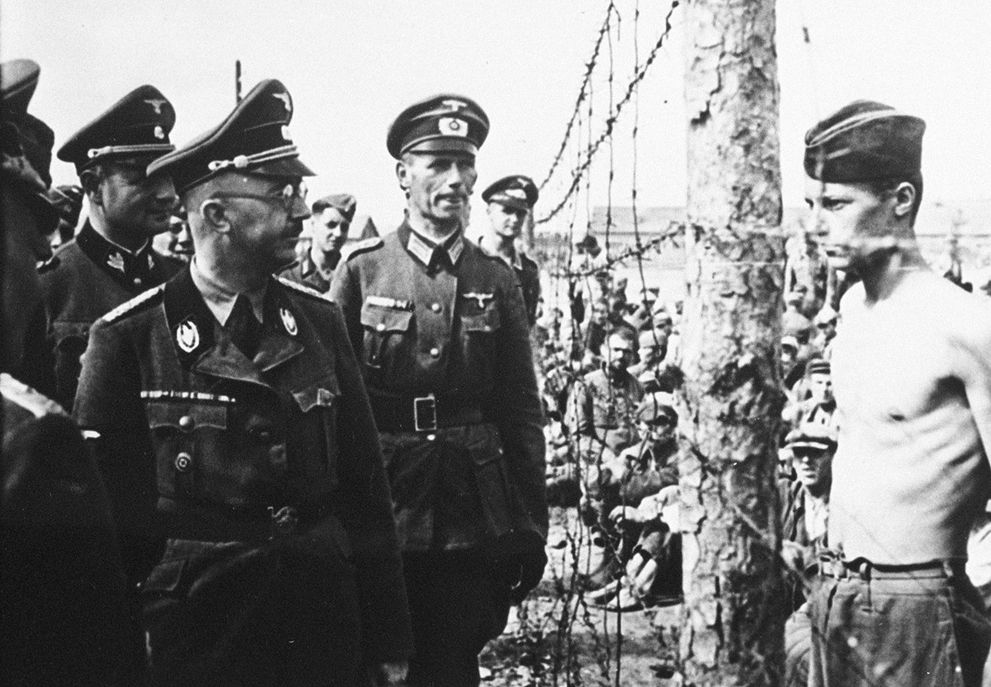General Discussion
Related: Editorials & Other Articles, Issue Forums, Alliance Forums, Region ForumsStunning WWII photos, pre-war to post-war. 20 sections. The Atlantic 2011.
I have seen some pictures from this 20 piece retrospective, but I have never seen it as a whole. Awesome pictures, tragic ones, it would be easy to spend a day absorbing it all.
I remember Life Magazine carried some of the pictures like these of the Holocaust after the war, but no one talked much about it. It was too horrible to imagine. Frankly I never heard of places like Manzanar and other Japanese internment camps until just a few years ago.
World War II in photos. A Retrospective in 20 parts.
World War II is the story of the 20th Century. The war officially lasted from 1939 until 1945, but the causes of the conflict and its horrible aftermath echoed for decades in both directions. While feats of bravery and technological breakthroughs still inspire awe today, the majority of the war was dominated by unimaginable misery and destruction. In the late 1930s, the global population stood at approximately 2 billion. In less than a decade, the war between the nations of the Axis Powers and the Allies resulted in some 80 million deaths -- killing off about 4 percent of the whole world.
This series of entries was published weekly on TheAtlantic.com from June 19 through October 30, 2011, running every Sunday morning for 20 weeks. In this collection of 900 photos spread over 20 essays, I tried to explore the events of the war, the lives of the people fighting at the front and working back home, and the effects of the trauma on everyday activity. These images still give us glimpses into the experiences of our parents, grandparents and great grandparents, moments that shaped the world as it is today.
Here are 4 pictures from different sections.
Adolf Hitler, age 35, on his release from Landesberg Prison, on December 20, 1924. Hitler had been convicted of treason for his role in an attempted coup in 1923 called the Beer Hall Putsch. This photograph was taken shortly after he finished dictating "Mein Kampf" to deputy Rudolf Hess. Eight years later, Hitler would be sworn in as Chancellor of Germany, in 1933. (Library of Congress)
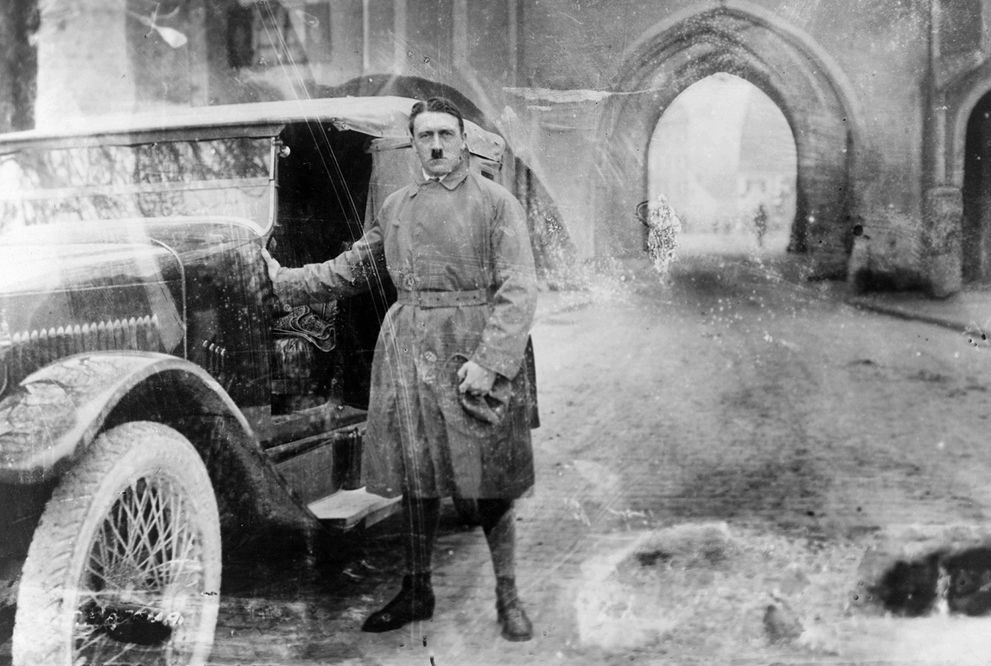
The Santa Anita Park race track is converted into an internment camp for evacuated Japanese Americans who will occupy the barracks erected in background in Arcadia, California. Photo taken on April 3, 1942. (AP Photo
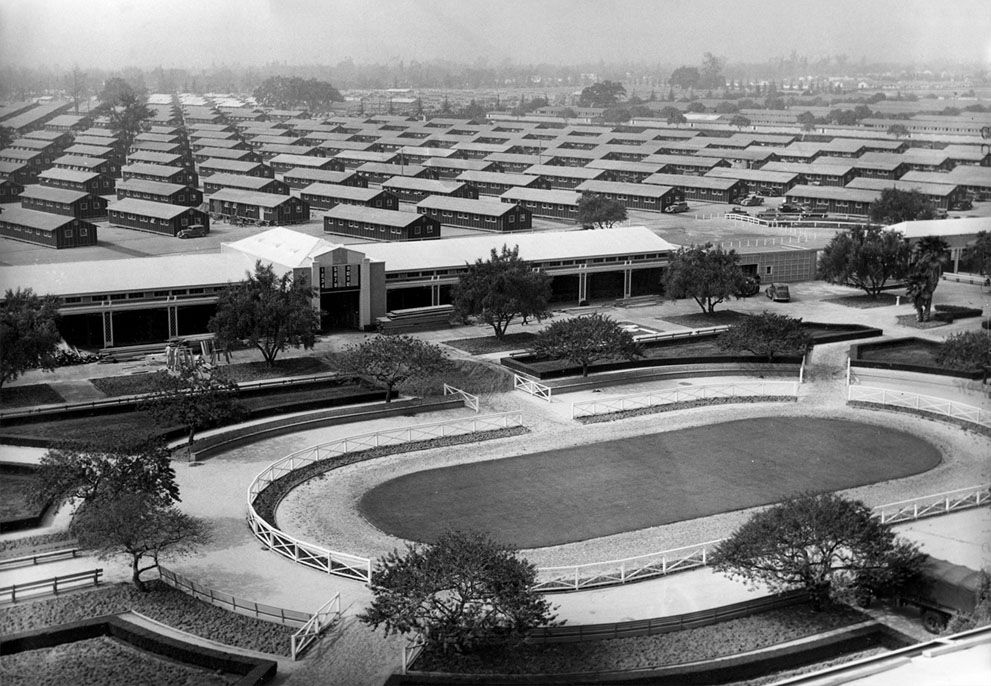
A Japanese family returning home from a relocation center camp in Hunt, Idaho, found their home and garage vandalized with anti-Japanese graffiti and broken windows in Seattle, Washington, on May 10, 1945. (AP Photo)
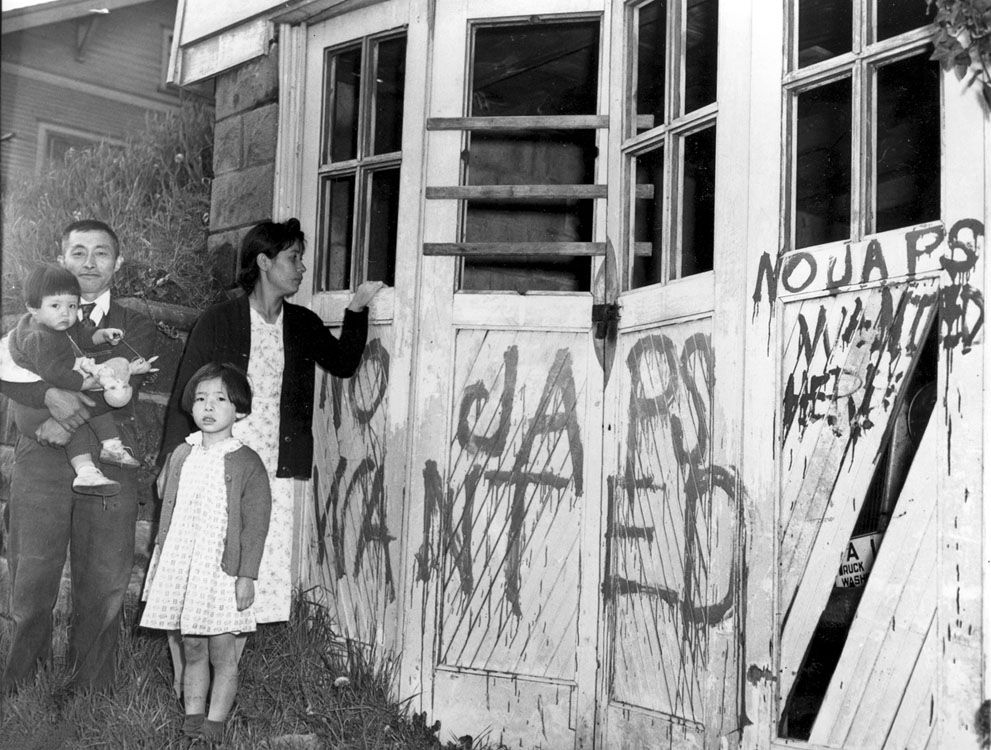
Looking north from 44th Street, New York's Times Square is packed Monday, May 7, 1945, with crowds celebrating the news of Germany's unconditional surrender in World War II. (AP Photo/Tom Fitzsimmons)
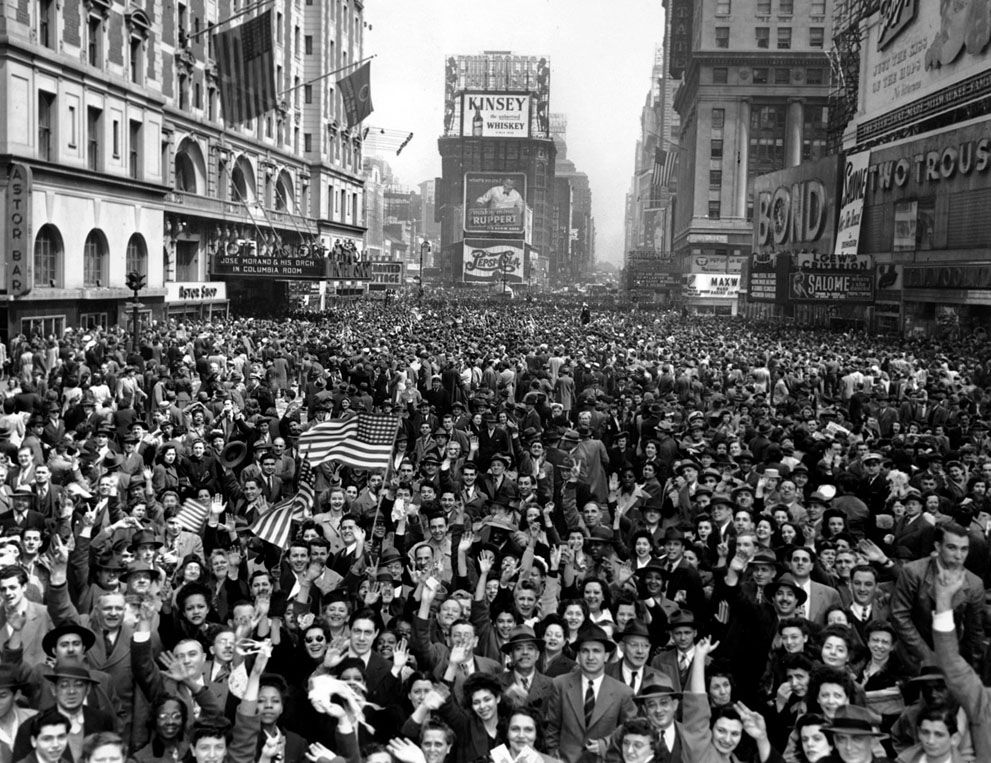
madfloridian
(88,117 posts)A German armored tank crosses the Aisne River in France, on June 21, 1940, one day before the surrender of France. (AP Photo)
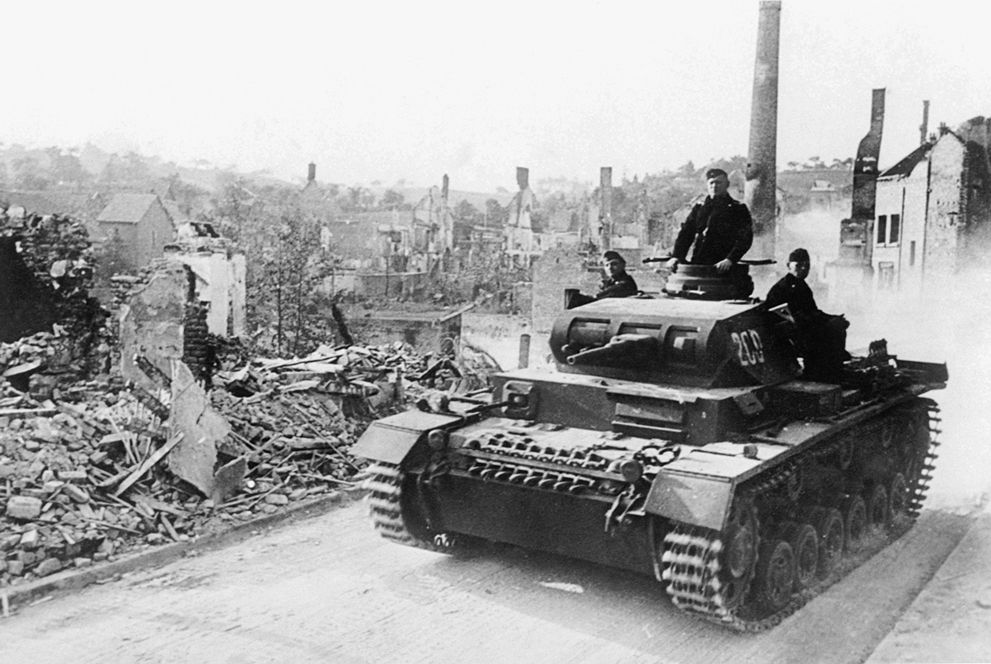
German troops parade in Copenhagen, Denmark on April 20, 1940 to celebrate Hitler's birthday. (AP Photo)
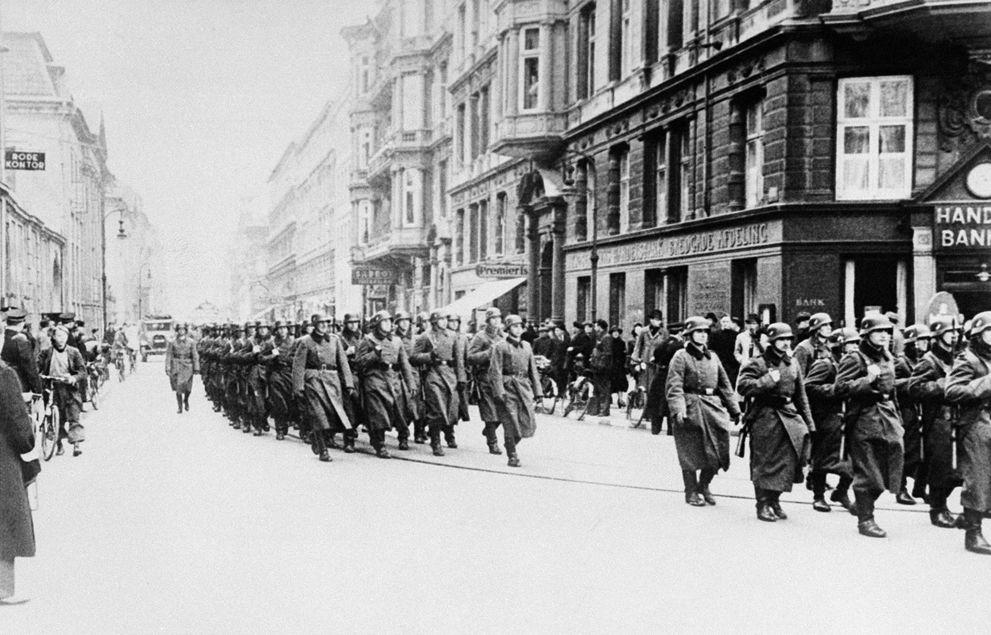
Sherman A1
(38,958 posts)Last edited Tue Sep 9, 2014, 05:02 PM - Edit history (1)
Thanks for posting. ![]()
madfloridian
(88,117 posts)Some of the battle photos carry warnings where you have to click through, but none of the Holocaust pictures do. They are very hard to view, in fact I had to leave that section after a few.
cwydro
(51,308 posts)I'd like to find more of the same about WW1, which fascinates me even more.
But my parents both lived through the bombs of Hitler in England and Wales. An uncle was in D-day.
This is important to remember.
Glassunion
(10,201 posts)
Cool link, thanks!
madfloridian
(88,117 posts)Omaha Steve
(99,589 posts)K&R!
madfloridian
(88,117 posts)They are such a piece of history. ![]()
madfloridian
(88,117 posts)Truly a war of conquest by Hitler...sometimes I think we should have entered it sooner. IMO
http://www.theatlantic.com/infocus/2011/07/world-war-ii-operation-barbarossa/100112/
On June 22, 1941, Nazi Germany and its Axis allies began a massive invasion of the Soviet Union named Operation Barbarossa -- some 4.5 million troops launched a surprise attack deployed from German-controlled Poland, Finland, and Romania. Hitler had long had his eye on Soviet resources. Although Germany had signed a non-aggression pact with the USSR in 1939, both sides remained suspicious of one another, and the agreement merely gave them more time to prepare for a probable war. Even so, the Soviets were unprepared for the sudden blitzkreig attacks across a border that spanned nearly 2,900 km (1,800 mi), and they suffered horrible losses. Within a single week, German forces advanced 200 miles into Soviet territory, destroyed nearly 4,000 aircraft, and killed, captured, or wounded some 600,000 Red Army troops. By December of 1941, German troops were within sight of Moscow, and they laid siege to the city. But, when the notorious Russian winter (nicknamed "General Winter"set in, German advances came to a halt. By the end of this, one of the largest, deadliest military operations in history, Germany had suffered some 775,000 casualties. More than 800,000 Soviets had been killed, and an additional 6 million Soviet soldiers had been wounded or captured. Despite massive advances, Hitler's plan to conquer the Soviet Union before winter had failed, at great cost, and that failure would prove to be a turning point in the war. (This entry is Part 6 of a weekly 20-part retrospective of World War II) [45 photos]
Heinrich Himmler (left, in glasses), head of the Gestapo and the Waffen-SS, inspects a prisoner-of-war camp in this from 1940-41 in Russia. (National Archives
